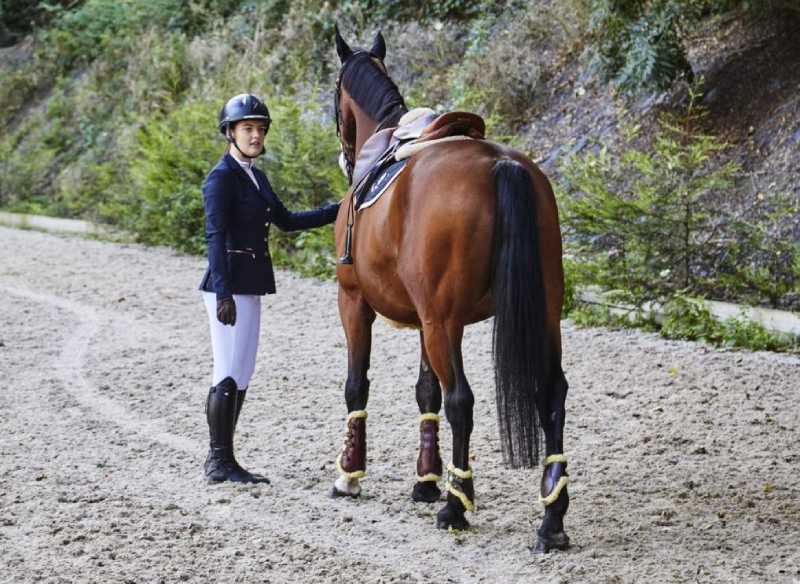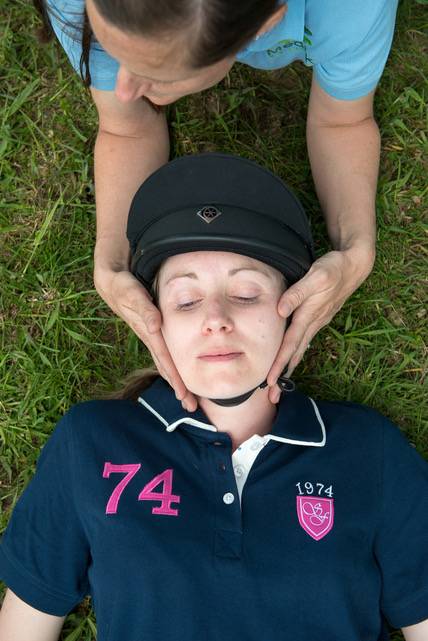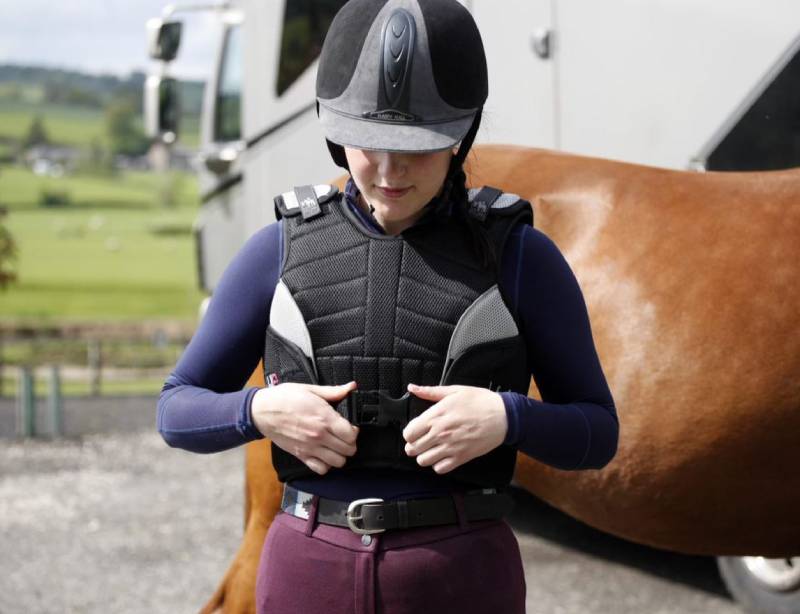
As horse riders we accept that, at some point, we will probably fall off our horse. It’s a sport that comes with risks (that we’re all too aware of) and we take measures to protect ourselves when the inevitable happens. So, what should you do if you fall off a horse?
The question of riding hat and body protector removal is asked regularly onMedi-K’s equestrian first aid coursesso we thought we’d speak to them to find out whether you should remove a riding hat and body protector when you fall off a horse.
Before we delve into the nitty gritty with Medi-K’s first aid trainer Ann, it’s worth saying all advice given is best practice but is subject to the context in which the casualty is found. At a riding event where there is first aider or medical support on hand then the simplest thing to do is leave all the difficult first aid decisions to the medical staff. However, if there are no medics on duty you may need to remove a hat or body protector to keep the casualty safe. Here is Medi-K’s advice on what to do if you or someone around you falls of a horse.

Should I remove a riding hat from a casualty?
The answer is – ‘it depends’! If the casualty is conscious and speaking clearly then leave their hat on. If they wish to take it off or want you to help them take it off, then this would be reasonable if no other medical support is close at hand. If they feel pain when they try and remove their riding hat, then stop and seek medical advice immediately. If the casualty wants to get up from the ground, they can try and sit up but if they feel any pain they should lie still, and in this instance, you need to call for medical attention. The casualty should keep their neck and head ‘in place’ if they want to get up from the ground and into a safer more comfortable position. Ensure their head is supported by maintaining a 'spine in line' position.

If the casualty is unconscious and not speaking, then check they have a clear airway and that they are breathing. If they are breathing normally with their hat on, then leave it on and wait for medical assistance. Again, support their head maintaining 'spine in line'.
Don’t release any chin straps without removing the helmet as the helmet, and therefore the head and neck, will become unstable. Chin straps that are restricting the casualty’s breathing (sometimes you hear them gurgling or gasping) are a sign that the helmet needs to be removed.
How to remove a riding helmet after injury:
If the casualty is vomiting, or there is fluid in their mouth, and they are gagging, then it is essential to clear their airway. This will require their hat to be removed carefully and the casualty put into the recovery position. Many unconscious casualties will vomit as it is a common response to the trauma. The risk with vomit is that the casualty chokes and blocks their airway. By putting the casualty into the recovery position, they can manage their airway and any vomit will fall out to the ground.
How to put a rider in the recovery position:
Should I remove a body protector from a casualty?
Again, with a conscious casualty, you can ask them to remove it, or you can help them remove it.
If there is a bleeding injury, you’ll need to get access to it to check and treat it. Any signs of internal injuries, such as bruising or tenderness, may be missed if you don’t get down to skin level to do a thorough check.
With unconscious casualties, ensure their airway is clear and that they are breathing normally. Then body protectors can be removed to assess damage after you’re certain there’s no neck or spinal damage. Thoroughly assess and treat any injuries and put them in the recovery position.

If there’s a break or dislocation, a conscious casualty will hold the injured limb in the most comfortable and painless position. Your task as a first aider is to immobilise the limb in this position and arrange for medical treatment.
Shoulders are a common injury as a result of a horse-riding fall and there is a risk of more pain or damage being caused by removing the jacket in the normal way. This is where a good pair of medical scissors or shears in your first aid kit help as you can cut the jacket away in sections if you can’t remove the straps. Many other injuries caused by kicks, slips and falls require you to get to skin level to better assess and treat the injury so body protectors, and other clothing, are a barrier to this and need to come off or be cut off.
Air vest removal
The same applies to air vests – you need to find, assess and treat injuries and this can’t always be done with jackets still on. The air in the vest takes time to deflate but can be deflated more quickly by unscrewing the CO 2 canister. Remember that air vests reduce the impact but do not remove the risk of injuries so internal or external damage may still occur. This is especially true if the impact has been on hooves, fences or sharp objects.
About the First Aid Training Co-operative /Medi-K:
The First Aid Training Co-operative and Medi-K offer first aid courses for horse riders in the UK. Along with the training team at Medi-K, Cory Jones has developed an equestrian first aid manual which can be downloaded to your phone or tablet.
All One Club members receive 10% off first aid courses with Medi-K, but that's only one of the many benefits our members can access. Click here to explore all the member benefits .
